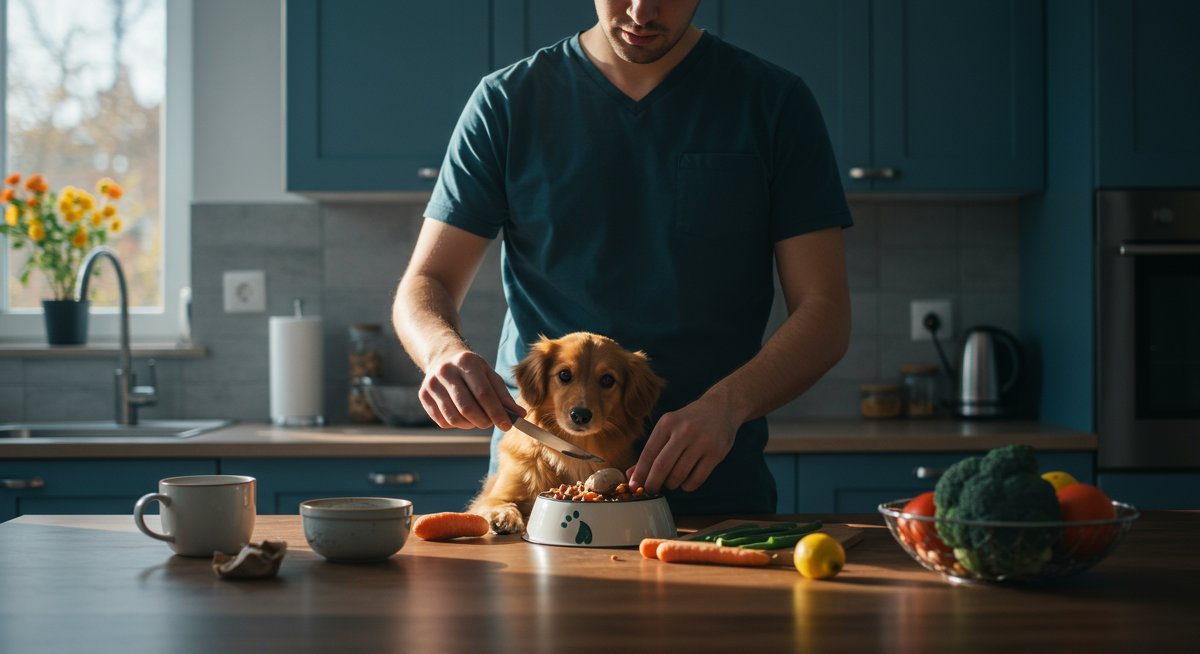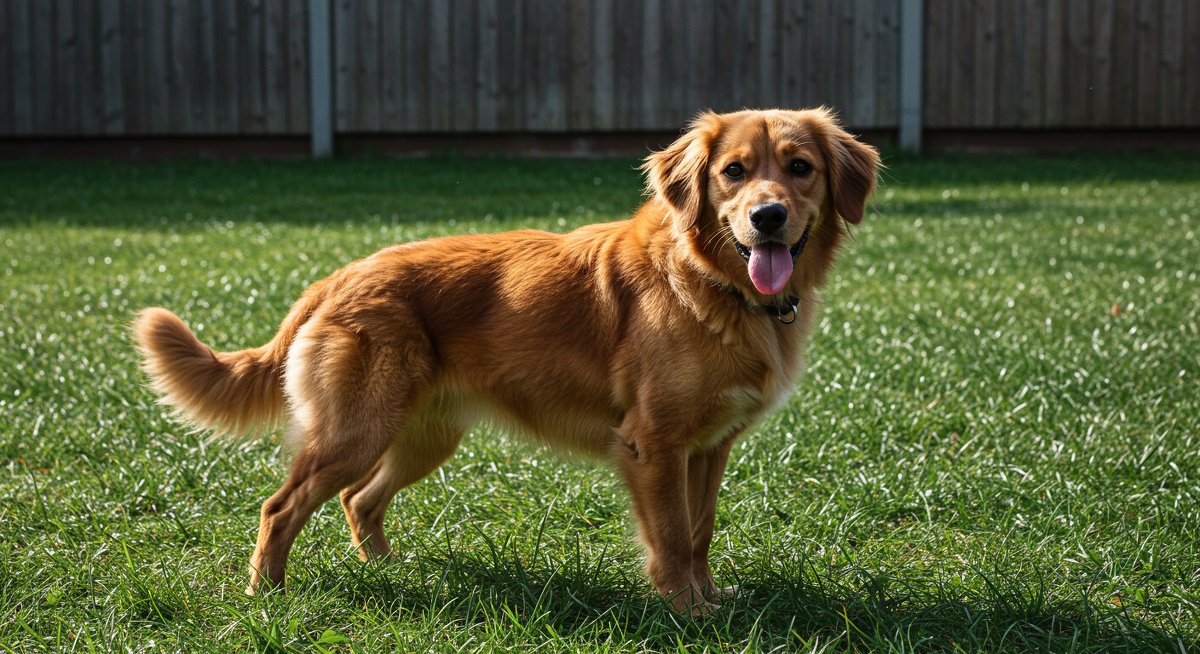
Deep dive into dog bloat: Protecting your canine companion
As experienced pet parents, you know that every day with your dog is a gift. Have you heard of bloat? It's a silent killer, and I want to equip you with the knowledge and tools to prevent it. This article is designed to give you an in-depth understanding of this serious condition, including the causes, symptoms, preventative measures, and what to do in an emergency. Let's work together to ensure your dog enjoys a long, healthy, and happy life.

Deep dive into [topic] for advanced pet parents
Understanding the threat: What is dog bloat?
Dog bloat, also known as gastric dilatation-volvulus (GDV), is a life-threatening condition where the stomach fills with gas and can twist on itself, cutting off blood supply. It's a race against time, and the more you know, the better you can protect your dog. This isn't something you want to take lightly.
Did you know that certain breeds are predisposed to bloat? Deep-chested breeds like Great Danes, Irish Setters, and German Shepherds are at a higher risk. But any dog can be affected, and it's crucial to be vigilant, regardless of breed.
Real-World Example: A local veterinarian shared a heartbreaking story about a client's Great Dane. The dog went from playing in the backyard to critical condition within hours. The owners, though experienced, weren't fully aware of the subtle early signs. Thankfully, the dog survived, but the experience underscored the importance of preventative measures and rapid response.
Expert Tip: Familiarize yourself with the anatomy of your dog's abdomen. Knowing where the stomach is located can help you recognise signs of distension more quickly.
The culprits: Causes of dog bloat
Several factors can contribute to dog bloat, and understanding them is the first step in prevention. While the exact cause isn't always clear, there are some common risk factors:
- Eating Habits: Eating too quickly, gulping air while eating, or eating large meals can increase the risk. Some dogs may have a tendency to eat rapidly if they are competing for food or feel insecure. Real-World Example: A dog owner I know switched from free-feeding to scheduled meals. The dog, accustomed to grazing all day, would eat its entire meal in seconds. This was a recipe for disaster, and the owner had to adjust by using a slow-feeder bowl.
- Dietary Factors: Dry kibble, especially when high in fat or containing certain preservatives, has been linked to an increased risk. Fermentable foods can also contribute to gas buildup.
- Exercise: Vigorous exercise immediately before or after meals. Never let your dog run or play hard right after eating. Common Mistake: Many owners are unaware of how much exercise a dog should do after a meal. A walk is fine, but running around, playing, or jumping should be avoided for at least an hour after eating.
Spotting the signs: Symptoms of dog bloat
Early detection is critical. The symptoms of bloat can be subtle at first, but they quickly escalate. Be aware of the following:
- Restlessness and pacing: Your dog may appear anxious and unable to settle.
- Distended abdomen: The stomach may look swollen or tight, particularly on the left side.
- Unsuccessful attempts to vomit or defecate: This is a classic sign.
- Excessive drooling: The dog may drool more than usual.
- Rapid heart rate: The pulse will increase as the condition progresses.
- Weakness and collapse: In severe cases, the dog may become weak and collapse.
Real-World Example: A client's dog began retching and acting restless after dinner. The owner, thankfully, had read up on bloat and immediately recognised the symptoms. They rushed the dog to the vet, where bloat was confirmed, and the dog received life-saving treatment. The prompt action saved the dog's life.
Expert Tip: Keep a watchful eye, especially after mealtimes. Any changes in your dog's behavior or appearance should be taken seriously.
Advanced strategies and insights
Preventative measures: Safeguarding your dog
Preventing bloat requires a proactive approach. Implement these strategies to minimise the risk:
- Feeding Practices:
- Multiple Small Meals: Instead of one large meal a day, split the food into several smaller portions. This reduces the volume of food in the stomach at any given time. Example: Instead of one large bowl, feed your dog three or four smaller meals spread throughout the day.
- Slow-Feeder Bowls: Use a slow-feeder bowl to encourage slower eating. This can significantly reduce the amount of air swallowed while eating. The Outward Hound Fun Feeder Slow Feed Dog Bowl is a great option to try.
- Avoid Elevated Bowls: While it may seem logical for large dogs, elevated bowls have been linked to an increased risk of bloat. Feed your dog at ground level.
- Dietary Adjustments:
- High-Quality Food: Choose dog food with high-quality ingredients and lower fat content.
- Avoid Overfeeding: Stick to the recommended feeding guidelines on your dog's food label.
- Limit Dry Kibble: If possible, consider incorporating wet food or other supplements into your dog's diet to increase moisture content.
- Exercise and Hydration:
- No Exercise After Meals: Never allow your dog to engage in strenuous exercise immediately before or after eating. Wait at least an hour.
- Fresh Water Always Available: Ensure your dog has access to fresh water at all times to aid digestion.
- Prophylactic Gastropexy: For dogs at high risk (e.g., those with a family history of bloat or deep-chested breeds), discuss prophylactic gastropexy with your vet. This surgical procedure attaches the stomach to the abdominal wall to prevent twisting.
Common Mistake: Many owners feed their dogs too quickly or allow them to drink excessive amounts of water after eating. This can exacerbate the risk of bloat.
Emergency response: What to do if you suspect bloat
If you suspect your dog has bloat, time is of the essence. Every minute counts. Follow these steps:
- Contact Your Veterinarian Immediately: Don't hesitate. Explain the symptoms and your concerns.
- Transport Your Dog Safely: Keep the dog as calm and still as possible during transport. Avoid any unnecessary stress.
- Follow Veterinary Instructions: Your vet will likely perform an X-ray to confirm the diagnosis. Treatment often involves:
- Decompression: Inserting a tube into the stomach to relieve gas buildup.
- Surgery: If the stomach has twisted, surgery is required to untwist it and perform a gastropexy (attaching the stomach to the abdominal wall to prevent future twisting).
- Fluid Therapy: Administering intravenous fluids to combat shock.
Real-World Example: In an emergency, knowing your vet's contact information and the location of the nearest emergency vet clinic is critical. A pet owner I know had to rush their dog to the emergency vet in the middle of the night. Because they knew where to go, they saved precious minutes.
Expert Tip: Have the phone number of your vet and the nearest emergency vet clinic readily available (e.g., programmed into your phone and posted on your refrigerator).

Integrating advanced care practices
Aftercare and long-term wellness
After your dog has recovered from bloat, long-term care is essential to prevent recurrence:
- Continued Preventative Measures: Maintain the feeding practices and dietary adjustments.
- Regular Check-ups: Schedule regular check-ups with your veterinarian to monitor your dog's health.
- Monitor for Recurrence: Be vigilant and watch for any recurrence of symptoms.
- Consider Long-Term Gastropexy: If your dog had to undergo surgery, consider discussing a permanent gastropexy with your vet.
- Quality of Life: Focus on overall health and well-being, including proper nutrition, exercise, and mental stimulation.
Common Mistake: Many owners become complacent after their dog recovers from bloat. Consistent preventative measures and vigilance are necessary for the rest of the dog's life.
The value of early intervention
Early intervention is key to survival. Bloat can kill quickly. If you suspect your dog has bloat, contact your veterinarian immediately.
Expert Tip: Consider enrolling in a pet first aid course. It can provide you with the skills and knowledge to handle emergency situations.
Expert-level pet care insights
Advanced considerations and insights
Dealing with bloat can be stressful, but with the right knowledge, you can significantly increase your dog's chances of survival. Remember, prevention is the best medicine. By understanding the causes, recognising the symptoms, and taking preventative measures, you can help keep your dog safe and sound.
And if you're considering the long-term health and well-being of your companion, think about pet insurance. It can help cover unexpected veterinary costs and give you peace of mind.
Finally, always be attentive to your dog. They depend on you. By staying informed and proactive, you can give your best friend the longest, happiest life possible.
If you've faced this challenge with your dog, I'd love to hear your experience. Sharing knowledge and stories can make all the difference.